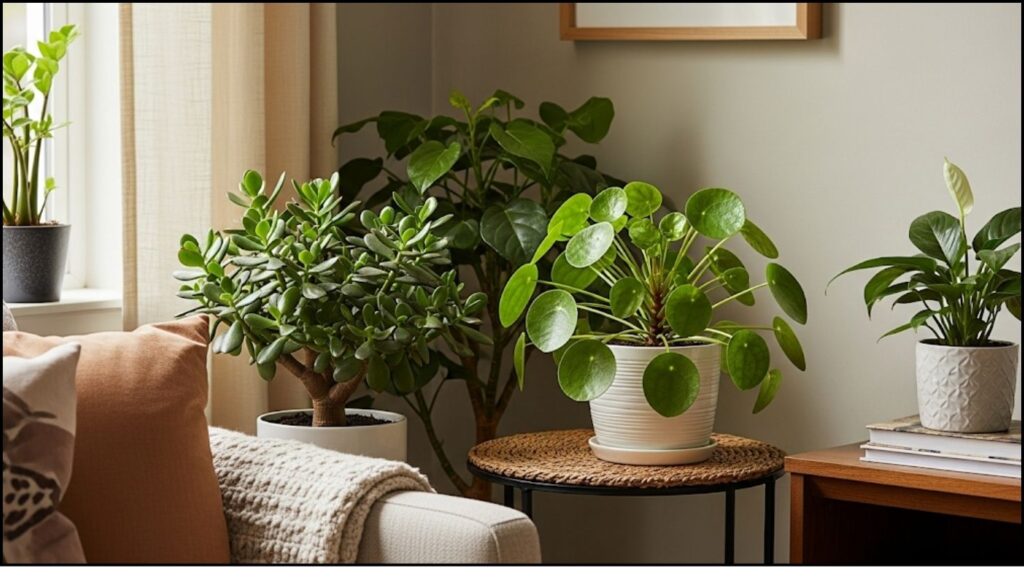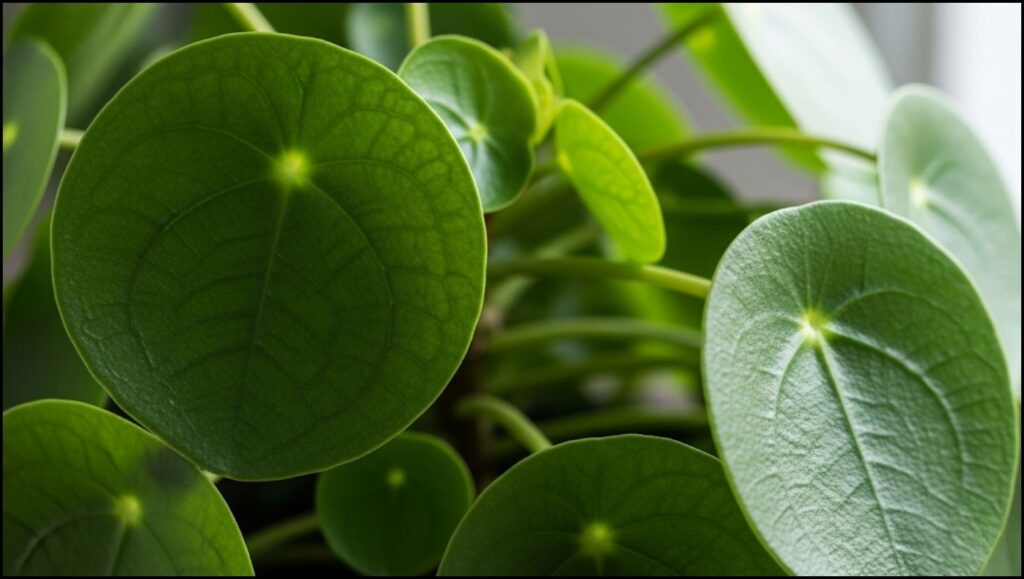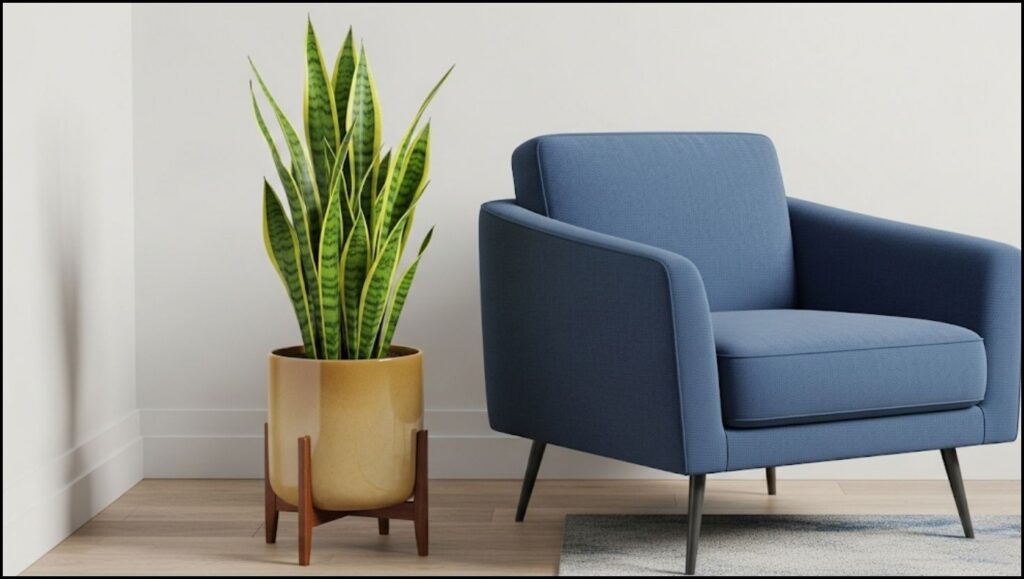
There is a certain magic in bringing the outdoors in. A well-placed houseplant can transform a room, purifying the air and calming the soul. But some plants are cherished for more than just their beauty; they carry with them stories, traditions, and the promise of prosperity. These are the money plants that bring good fortune, treasured for centuries as living talismans for wealth and success. More than mere superstition, tending to these plants fosters mindfulness and symbolizes our own potential for growth. This guide will introduce you to seven of the most beloved varieties, sharing not just their stories but the expert care needed to help them—and perhaps your fortunes—flourish.
Quick Tips for a Prosperous Indoor Garden
Here’s what you need to know to get started with these lucky plants.
- Light is Key: Most of these plants thrive in bright, indirect sunlight. A spot near an east-facing window is often perfect.
- Avoid “Wet Feet”: The fastest way to harm a plant is by overwatering. Always check the soil’s moisture before reaching for the watering can.
- Placement with Purpose: In many traditions, placing your plant in the southeast area of your home or office is thought to attract wealth.
- Beauty Inspires: Choose a beautiful container that complements both the plant and your decor. A healthy, well-styled plant brings joy, which is its own form of abundance.
Why We Adorn Our Homes with ‘Lucky’ Plants
The practice of using plants as symbols of prosperity is deeply rooted in cultural traditions like Feng Shui, the ancient Chinese art of placement. In Feng Shui, living plants introduce vibrant “Chi,” or life force energy, into a space. Plants with soft, rounded leaves are often considered auspicious, their shape mimicking coins and promoting a gentle, positive flow of energy. According to practitioners, this vibrant energy helps clear stagnation and create an environment where success and opportunity can thrive.
Beyond ancient traditions, modern science gives us another reason to believe in these lucky plants for home. The concept of biophilia suggests that humans have an innate tendency to seek connections with nature. A study highlighted by the University of Minnesota explains that interacting with indoor plants can reduce stress, improve concentration, and boost our mood. When we feel better, we perform better—a clear path to prosperity in its own right. As a horticulturist, I’ve seen firsthand how caring for a living thing provides a sense of purpose and accomplishment, tangible rewards that enrich our daily lives.
Our Curated List of 7 Money Plants That Bring Good Fortune
Here are seven beautiful and resilient plants, each with a unique story and simple care requirements, perfect for both novice gardeners and seasoned plant enthusiasts.
1. The Chinese Money Plant
Why It’s Lucky: With its delightful, coin-shaped leaves, the Pilea is a modern favorite among feng shui plants. The way its round leaves stack on upright stems is said to represent accumulating wealth. It’s also known as the “Pass-it-On Plant” because it readily produces offsets you can share with friends, spreading good fortune.
Horticulturist’s Care Guide:
- Light: Prefers bright, indirect light. Direct sun will scorch its delicate leaves.
- Water: Water thoroughly when the top inch of soil is dry. The leaves will begin to droop slightly when it’s thirsty.
- Soil: A standard, well-draining potting mix is perfect.
- Expert Tip: I always rotate my Pilea a quarter turn each week. This ensures it grows evenly and doesn’t lean too heavily toward the light, maintaining its lovely, symmetrical shape.
Styling Suggestion: The Pilea’s minimalist form looks stunning in a simple, Scandinavian-style ceramic pot on a desk or a credenza where its unique silhouette can be appreciated.

2. The Jade Plant
Why It’s Lucky: A classic among indoor plants for wealth, the Jade Plant is a succulent with fleshy, oval-shaped leaves that resemble jade stones—a symbol of wealth and honor. In many Asian cultures, it is a traditional gift for new business owners or for housewarmings.
Horticulturist’s Care Guide:
- Light: Needs plenty of direct sunlight to thrive, at least four hours a day. A south-facing window is ideal.
- Water: Being a succulent, it’s highly susceptible to root rot. Let the soil dry out completely between waterings.
- Soil: Use a cactus or succulent mix that provides excellent drainage.
- Expert Tip: A common mistake I see is planting Jade in a pot without a drainage hole. This is a death sentence for them. Proper drainage is non-negotiable for this plant.
Styling Suggestion: The sturdy, tree-like structure of an older Jade Plant looks magnificent in a heavy, shallow terra cotta or bonsai pot, making it a powerful statement piece.
3. The Money Tree
Why It’s Lucky: The Money Tree is perhaps the most famous of these plants. The story goes that a poor man prayed for wealth, discovered this unusual plant, and made a fortune selling them. The braided trunk is thought to “trap” fortune, and the five-lobed leaves represent the five elements of Feng Shui: wood, water, fire, earth, and metal.
Horticulturist’s Care Guide:
- Light: Thrives in medium to bright indirect light. It can tolerate lower light but may grow more slowly.
- Water: Water deeply when the top 50-75% of the soil is dry. It does not like to be consistently moist.
- Soil: A peat-based potting mix with good aeration works well.
- Expert Tip: Yellowing leaves are the most common complaint I hear about Money Trees. This is almost always a sign of overwatering, not underwatering. Always err on the side of too dry.
4. Golden Pothos
Why It’s Lucky: In many parts of South Asia, the Pothos is simply called “The Money Plant.” Its heart-shaped, variegated leaves and incredibly resilient nature symbolize perseverance and the ability to thrive in any condition. Its fast-growing vines are said to represent expanding wealth.
Horticulturist’s Care Guide:
- Light: Extremely adaptable, it tolerates low light but shows its best color in bright, indirect light.
- Water: Water when the top inch of soil feels dry. It’s quite forgiving if you forget once in a while.
- Soil: Any standard potting soil will do.
- Expert Tip: The Pothos is one of the easiest plants to propagate. Just snip off a vine with a few leaves, place it in a glass of water, and you’ll have a new plant to share in a few weeks. It’s a wonderful way to fill your home with greenery.
Styling Suggestion: Let its vines trail elegantly from a hanging basket or down the side of a bookshelf to draw the eye upward and create a sense of lushness.
5. The ZZ Plant
Why It’s Lucky: The ZZ Plant is a powerhouse of resilience, often called the “Fortune Tree” or “Eternity Plant.” Its steady, upward-growing wands of glossy leaves symbolize growth, stability, and endurance—qualities essential for long-term prosperity.
Horticulturist’s Care Guide:
- Light: It’s famous for its tolerance of very low light, though it does best in moderate, indirect light.
- Water: This is a drought-tolerant plant. Water it only when the soil is completely dry. According to the University of Wisconsin-Madison Division of Extension, its underground rhizomes store water, making it very sensitive to overwatering.
- Soil: A well-draining mix is crucial. A succulent mix or regular potting soil amended with perlite works great.
- Expert Tip: If you think your ZZ plant is dead, wait. I’ve seen them lose all their leaves due to underwatering, only to sprout new growth from the rhizomes once watering resumes. It’s incredibly tough.
Styling Suggestion: Its bold, architectural form is a perfect match for modern and contemporary decor. Place it in a sleek, simple planter on the floor to add a touch of dramatic, upright greenery.
6. Snake Plant
Why It’s Lucky: While not a traditional “money” plant, the Snake Plant’s strong, upward-growing leaves are valued in Feng Shui for their protective energy. They are thought to shield a home from negative Chi and preserve the good fortune within. Its air-purifying qualities also contribute to a healthier, more productive environment.
Horticulturist’s Care Guide:
- Light: Extremely versatile, it handles everything from low light to bright, indirect sun.
- Water: Like other succulents, it prefers to dry out between waterings.
- Soil: A free-draining soil mix is best to prevent root rot.
- Expert Tip: In my experience, the biggest threat to a Snake Plant is a combination of low light and too much water. If your plant is in a darker corner, you might only need to water it once a month.
Styling Suggestion: The vertical lines of the Snake Plant provide a wonderful contrast to softer, rounded furniture. Group several in a rectangular planter to create a living screen.

7. Lucky Bamboo
Why It’s Lucky: Not a true bamboo, this member of the Dracaena family is a cornerstone of Feng Shui applications. The number of stalks has different meanings: two for love, three for happiness and wealth, five for all areas of health, and so on. Its hollow structure is said to allow for the movement of positive energy.
Horticulturist’s Care Guide:
- Light: Prefers bright, filtered sunlight. Direct sun can burn the leaves.
- Water: If grown in water, change the water weekly with distilled or filtered water to prevent mineral buildup. If grown in soil, keep the soil evenly moist.
- Soil: Can be grown hydroponically in pebbles and water or in a rich, well-draining potting soil.
- Expert Tip: If the leaf tips turn brown, it’s often due to chemicals like fluoride in tap water. Switching to filtered water is the easiest fix.
Styling Suggestion: An elegant arrangement of three or five stalks in a clear glass vase with decorative stones makes a simple, sophisticated accent for a bathroom or entryway.
Cultivating Your Own Good Fortune
Choosing to bring one of these beautiful plants into your home is more than just a decorative choice—it’s an act of optimism. Whether you are drawn to the charming leaves of the Pilea or the stoic resilience of the ZZ Plant, you are inviting a piece of living art into your space. Tending to these money plants that bring good fortune is a simple, rewarding ritual that connects you to the rhythms of nature and symbolizes your own aspirations. So, select a plant that speaks to you, give it a place of honor, and watch as it fills your home with beauty, life, and perhaps, a little extra luck.
8 Stunning Border Flower Bed Ideas to Enhance Your Garden’s Look
